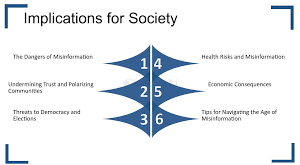Augmented Reality: A Canvas to the Future of Interaction
rise
Augmented reality is such a technology that gives an immersive experience by mingling the digital world with the physical one with the help of overlaying digital elements onto the physical environment. While virtual reality creates an utterly artificial environment, on the other hand, AR enhances the user’s physical world experience with more digital information, images, or interactions.
From gaming and entertainment to education, health care, and marketing, augmented reality is bound to revolutionize industries in coming years by enabling a more dynamic and connected world. In this post, we will look into what AR is, how it works, its applications across diverse fields, and the pros and cons it presents for the future.
Understanding Augmented Reality
Augmented reality refers to a technology that superimposes digital information onto the physical world. Devices facilitating this interplay include anything from smartphones and tablets to headsets or AR glasses.
The user perceives this overlay in real time, hence creating an experience that collates the real and the digital together seamlessly.
AR works by leveraging multiple technologies in concert-computer vision, sensors, and cameras-that detect physical objects and spaces; these map the user’s environment to ensure that virtual elements are effectively placed and aligned.
If, for example, an AR app overlays information on a historic landmark, it draws on GPS records and digital camera input, sometimes even artificial intelligence, in order for that information to appear in the right place and context.
The intensity of interaction is the key to its immersive experience. AR can let customers interact with their surroundings in a new and meaningful way by mixing their real-world objects with digital enhancements. This level of interactivity can alter the way humans work, learn, shop, and even interact socially.
Key technology behind AR
Augmented reality is enabled by several core technologies:
1. Cameras and Sensors:
The cameras and sensors record the real world for objects, locations, and movements that are highly essential to map and position digital content in reality.
2. Processing Power:
AR requires immense power for its processing during real-time interactions. High-end processors in smartphones, tablets, and AR headsets also perform tasks like object recognition, data analysis, and rendering of virtual graphics.
3. Projection:
The projection created in AR devices throws digital information as an overlay onto real-world surfaces. For instance, in the phone AR application, the screen acts as a projection surface for virtual pictures and information.
4. computer imaginative and prescient:
pc imaginative and prescient algorithms analyze and interpret the actual-world surroundings, permitting AR structures to apprehend items, moves, and spatial relationships. This allows more accurate overlays of virtual content material on bodily spaces.
5. artificial intelligence:
AI furthers the capability of AR by enabling devices to better perceive and interact with their environment. AI may facilitate the gaining of context by AR programs, making decisions, and intelligent responses to consumer interaction.
applications of Augmented reality
AR is finding its way into a broad range of industries, revolutionizing how humans interact with the world. Following are some of the key packages of AR.
1. Entertainment and Gaming
One of the first large-scale adaptors of AR was the gaming industry. For example, video games like “Pokémon go” brought AR to the mainstream by merging digital creatures with real-world locations.
These immersive narratives enable gamers to interact with their environment in new ways and in an engaging manner. AR also extends to entertainment, whereby museums, galleries, and theme parks will use it to make interactive versions of famous and sights.
2. Retail and advertising
AR is revolutionizing the way that people buy things by letting customers visualize products in real time. Businesses like IKEA and Amazon are already using AR to let customers see how furniture or décor will look in their homes before they make the purchase.
In fashion, AR lets customers virtually “try on” clothes, accessories, and makeup, reducing the need to try them on physically and making an online experience more interesting. Similarly, AR in advertising campaigns creates interactive and memorable ads, fusing the physical and virtual worlds for brand engagement.
3. Education and Training
AR is changing education by making learning more interactive and engaging. Lecture halls: AR will turn the content inside their textbooks into animated forms to let the students see whatever is there in 3D-be it complex anatomy, space explorations, or even historical events.
This gives them hands-on experiences that could prove good for retention and understanding. Professional Usage: AR happens to find great application in training purposes; this is especially in demand in fields relating to medicine, engineering, and military educations.
For instance, surgeons can conceptualize, with the use of AR, complicated approaches before or during surgical treatment to achieve better preciseness and results.
4. Healthcare
In the healthcare business, AR is proving to be a useful tool for both practitioners and patients. Medical professionals are able to view patient anatomy in 3D for the duration of surgeries with AR or diagnose conditions much more accurately through overlaying virtual data onto a patient’s body.
Again, AR has started finding its use in patient education: helping patients understand their conditions and available treatments. AR uses are also being made in physical therapy programs, guiding patients through exercises and musical progress in real time.
5. manufacturing and preservation
Augmented Reality is being applied more and more in manufacturing and maintenance processes to enhance speed and precision. With AR headsets or drugs, technicians can have real-time access to information regarding equipment in order to guide them through complicated repairs or assembly processes.
This minimizes errors and accelerates the production lines. For maintenance, AR is able to overlay instructions or diagrams on machinery, which helps workers get easier awareness of troubles and perform the maintenance.
6. Architecture and Construction
AR is taking architecture and construction to a whole new level, as it enables architects, designers, and builders to see projects in advance of their actual completion. AR can overlay virtual blueprints on construction sites, showing in great detail what the completed building would look like and ensures that plans are carried out to the letter.
It also allows for greater collaboration between teams because literally everyone is able to see the same virtual model overlaid on the physical site.
Challenges and Limitations of Augmented Reality
In spite of promising applications, AR has several challenges:
1. Technical hurdles:
AR is based on rich hardware and software, which can be expensive to design and implement. Additionally, AR architectures demand heavy processing power and battery life, which may constrain their usability in mobile packages.
2. human experience:
Such development may create seamless and intuitive interactions among virtual and physical worlds. Usually, in AR applications, there is a demand to hold the phone or tablet up, which may be heavy after some time. Moreover, AR glasses and headsets are more immersive; however, they are bulky to wear, expensive, or socially awkward to wear in public.
3. Privacy and Security Concernations:
There are several privacy and security concerns related to the extent of user information that AR systems collect and observe about the user and the environment. Examples of such aspects include facial recognition and location tracking which may be manipulated if not well secured.
4. content creation:
AR content is a labor-intensive and time-consuming process. Content should be highly unique, context aware, and responsive to the real-world environment; this requires specialized skills and technology. Also, content does need updates over a period of time to remain relevant and accurate.
5. Social reputation:
even as AR has awesome potential, there are also concerns approximately its widespread adoption. sporting AR headsets or glasses in public won’t but be socially ideal in all contexts. There also are issues related to the psychological consequences of regular immersion in augmented views.
The future of Augmented reality
The future of AR is full of exciting possibilities. As generation advances, AR studies become more and more seamless, immersive, and generally available. Glasses are predicted to end up more lightweight, low-priced, and socially correct, thus replacing smartphones as the main interface for AR reports.
Integration with AI will make AR greater sensible and adaptive, able to provide personalized context-conscious experiences.
In the long run, AR may play a key role in developing the “Metaverse”-a fully interconnected digital world that enriches every part of our lives, from work and learning to entertainment and social interaction.
AR will also serve as an elementary means of navigating this novel virtual space and allow people to engage with the world in previously unimaginable ways.
Conclusion
The augmented reality is such a revolutionary era that has the potential capability for changing the way in which we connect to the surroundings. From entertainment to retail, education, and health care, AR creates new opportunities for innovation and engagement.
Per contra the challenges of this technology, the same might face fast growth and development as innovative steps in the era continuously push the boundaries on what is possible. Since AR will be much better integrated into our daily life, it will unquestionably shape the future of digital interaction and beautify our experience of the world in fabulous ways.


